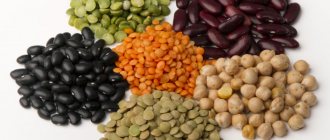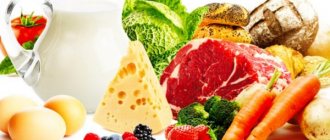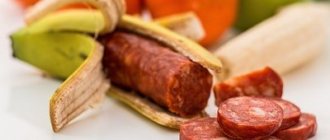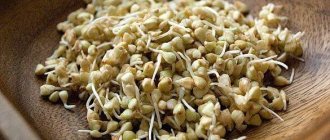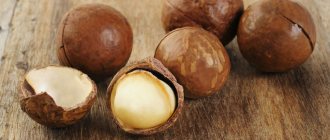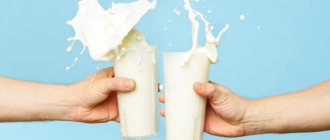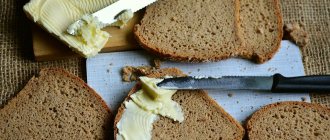By completing a course in dietetics, nutrition consultants learn how to properly distribute proteins, fats and carbohydrates (PFCs) in their clients' diets based on their needs and goals. An experienced nutritionist who has completed training can easily calculate the ratio of BJU you need and, based on these calculations, create an ideal menu.
The distribution of BZHU during the day has its own rules and patterns. Knowing them, you will speed up and facilitate your weight loss process, easily adjust your weight and improve your health. So, let's figure it out...
Daily diet options with different calorie content
Calculating calories for your diet is quite simple.
There are many formulas for this, but the simplest is to add 1 to your weight at the beginning and 0 at the end. Thus, a person weighing 60 kilograms should eat 1600 calories, a person weighing 75 should eat 1750, and so on. In any menu, the bulk of calories come from lunch, with a little less from breakfast and dinner. Snacks are the lowest in calories. There are several diet options depending on the amount of calories needed.
https://www.youtube.com/watch?v=ytcopyrightru
Menu for the day:
- breakfast: boiled meat (90 g), green peas baked with egg (1 egg, 250 g of peas), coffee with milk without sugar (1 glass, milk - 50 g);
- snack: apple (100 g);
- lunch: vegetable vegetarian soup (200 g), steamed meatballs (120 g raw meat), stewed beets (150 g);
- afternoon snack: rosehip decoction (1 glass), cottage cheese (100 g);
- dinner: boiled fish (100 g), vegetable side dish (150 g);
- at night: kefir (1 glass).
The good thing about this menu is that everyone can change it to suit themselves. 400 kcal are allotted for breakfast, and you can eat one of the proposed sets of dishes:
- omelette (2 eggs), vegetable salad (100 g), rye bread (1 slice);
- oatmeal (1 serving), grated carrots with sour cream, bread (1 slice);
- cottage cheese casserole, salad (carrots, apple, olive oil), 1 rye bread.
Allowed drinks (without sugar): green tea, coffee with milk or cocoa. Lunch - 300-350 kcal.
Meal options:
- beetroot soup, boiled turkey (100 g), vegetable salad;
- fish soup, vinaigrette, 1 slice of beef tongue;
- chicken broth with eggs, baked fish, vegetable stew.
For drinks, you can choose green tea, freshly squeezed juice or water. 300 kcal remains for dinner.
Menu to choose from:
- boiled fish, stewed vegetables;
- cottage cheese with berries, bread (2 pieces);
- vinaigrette, boiled beef.
The menu consists of 3 meals:
- breakfast - 250 kcal;
- lunch - 300 kcal;
- dinner - 250 kcal.
Sample diet for the day:
- breakfast: low-fat cottage cheese (100 g), low-fat sour cream (1 tbsp), tea or coffee without sugar;
- lunch: chicken breast (100 g), steamed root vegetables (except potatoes);
- dinner: 1 egg, sliced cucumbers and tomatoes, skim milk (250 ml).
Instead of meat, you can eat boiled fish or seafood in the same quantity.
Three steps to the perfect menu
Step 1. Select products
When you cook your own food, it's easier for you to control the caloric content of your dishes: you know what ingredients you add and in what quantities. Let's see which products are better to give preference to and which ones should be avoided, significantly reduced in quantity or abandoned altogether.
| The right products | Wrong Products |
| Fresh meat: poultry, beef, pork, offal | Marinated meat or fish from the prepared foods department, store-bought minced meat |
| Fresh fish and seafood | Smoked meat or fish |
| Seasonal vegetables, fruits and berries | Ready-made semi-finished products: frozen cutlets, dumplings, dumplings, pancakes, ready-made set meals |
| Fresh herbs | Frozen fruits, vegetables and berries, canned products |
| Dairy and fermented milk products without additives and with a short shelf life | All dairy and fermented milk products with flavoring additives: yoghurts, curd desserts, curd cheeses |
| Cereals that require long cooking | Porridge, pasta and other instant side dishes |
| For dressing salads and other dishes: sour cream, vegetable oils, vinegar, soy sauce | Mayonnaise, ketchup, ready-made sauces for meat, fish, pasta, vegetables |
| Butter | Margarine, rendered animal fat, lard |
| Marshmallows, marshmallows, dark chocolate, fruit jelly | Sugar, candy, milk chocolate, sweet pastries |
| Dried fruits, nuts, honey | Alcohol, especially beer and ready-made cocktails |
| Bread: whole grain, bran, rye, wholemeal, sprouted wheat | White bread |
| Green tea, natural coffee | Instant coffee, sweet soda |
Don't be discouraged if you can't do everything at once. Gradually, you will learn to choose the products you need, refuse fatty store-bought sauces, and prefer oven-baked meat with mustard or fish with a sprig of rosemary and lemon to ready-made dumplings.
Buzhenina
Using the right ingredients, you can prepare delicious and varied dishes. And even homemade sausage, smoked meat, sweets, and baked goods.
Step 2. Proteins, fats and carbohydrates: for what and how much?
Any diet limits the consumption of carbohydrates, fats and, less often, proteins, from which we get calories - energy to maintain our vital functions. Fat is the most caloric: 1 gram of fat (any kind) contains 9 kcal. Proteins and carbohydrates - 4 kcal per 1 gram.
Carbohydrates
(bread, cereals, vegetables) are necessary for the body primarily as fuel, as a means of obtaining energy to maintain our vital functions. The fewer carbohydrates you consume, the less active you become.
Squirrels
(meat, poultry, offal, fish) is a building material for the muscles and cells of the body. If you cut too much protein in your diet, you will never get a beautiful, toned body.
Fats
important for the absorption of fat-soluble vitamins A, D, E, K. By eating only low-fat foods, you risk causing health problems. For example, calcium is absorbed in the presence of vitamin D. Vitamin D, in turn, is absorbed with the help of fats. It is advisable to consume fats from morning to lunch. In the evening, fats should be discarded or consumed in very small quantities (for example, seasoning a vegetable salad with sour cream or adding a drop of vegetable oil to it).
To lose weight without harm to your health, your diet should contain about 50% carbohydrates, 30% proteins and 20% fats
. With this balance of proteins, fats and carbohydrates, you will lose excess fat. If you want to speed up the process a little, reduce the amount of carbohydrates to about 40%, and on the contrary, increase the amount of proteins to 40-50%. According to doctors' recommendations, the amount of fat should not be lower than 10-15%.
Step 3. Create your own menu: we won’t give dinner to the enemy
8 proven tips that always work will help you with this.
Tip 1.
Never skip breakfast. Breakfast should be light, but at the same time fill you up and energize you. The calorie content of breakfast is approximately 30% of your daily diet. It is best to eat carbohydrate-rich foods in the morning.
The best breakfast
it's porridge.
With porridge you can eat fruits, dried fruits, bread, butter, cottage cheese, cheese, eggs, boiled meat, nuts, honey, milk, tea, coffee. You can safely pamper yourself with your favorite sweets for breakfast or during the first half of the day.
Tip 2.
Don't skip lunch. Lunch should be complete, calorie content should be about 40% of your diet, and include proteins and carbohydrates in approximately equal proportions.
What to eat for lunch:
first courses, vegetables with meat or fish, vegetables with potatoes, bread, sour cream, porridge with vegetables, meat or fish, salad, pasta, legumes.
Tip 3.
Don't skip dinner. If you didn’t manage to have dinner on time, be sure to eat a light dinner a little later. The last meal should be 4-5 hours before bedtime.
Perfect dinner
- this is meat or fish (protein) with vegetables. You can stew vegetables, make a salad, and prepare various casseroles with meat or fish. Moreover, protein should predominate. Evening calories account for about 20%.
Tip 4.
Always have a snack between meals. 8-10% of your daily calories should come from snacks.
What to eat for a snack in the morning:
fruits, crackers with tea, a handful of dried fruits or berries, nuts, honey.
What to eat in the afternoon:
vegetables, cottage cheese, fermented baked milk, yogurt, kefir, cheese. There is a very simple, tasty and satisfying salad (any proportions): cut fresh tomatoes into small cubes, add cottage cheese, chopped herbs, a little salt and a drop of olive oil. Mix all ingredients. Dill works very well for this salad, and basil is even better. Having a snack with this salad will perfectly satisfy your hunger. The same salad, only without oil, is perfect for dinner.
Tip 5.
Be sure to drink clean water throughout the day.
Water is necessary for normal digestion, which means that everything will be fine with your metabolism. It is better to drink water 20-30 minutes before meals, and no earlier than 1 hour after meals.
Tip 6.
If you don't have the opportunity to eat normally during the day, stock up on small plastic containers for each meal. At first it will not be very convenient for you to collect them and carry food with you. But very soon you will get used to the fact that you always have a healthy snack at hand and do not need to go to the supermarket during your lunch break to buy cutlets from the culinary section.
Tip 7.
Don't overeat at night, but don't go to bed on an empty stomach either. About an hour before bedtime, drink a glass of kefir, tea with lemon balm or mint. If you're hungry, eat a raw carrot, cucumber, celery, green apple, or a piece of cheese. In case of severe hunger (this happens at first, while you get used to a new way of eating), boiled meat helps out very well. There are no carbohydrates in it, and you don’t have to be afraid that you will put on something in the form of an extra kilogram.
Tip 8.
Don't overeat, even if it's your favorite treat. Do not eat until you feel heavy and short of breath. We often ask ourselves the question: how much should we eat at one meal? The fact is that all people are individual. The main cause of excess weight is banal overeating. A distended stomach can accommodate two, three or more servings. For such a person, not overeating means eating a little less than usual and feeling slightly hungry after eating. So start by reducing your portions.
limit portions
An acceptable serving size for the average person is about 200-300 ml. It is important to consider the calorie content of a serving. For example, 100 grams of fish soup contains from 30 to 50 kcal, and 100 grams of cervelat contains about 300 kcal.
Armed with knowledge, start planning your diet. Now only your favorite dishes and minus excess weight. Let's leave starvation diets in the past and start a new day with a smile!
How to distribute calories throughout the day
A person's morning begins with breakfast - complex and slow carbohydrates. Porridge, oatmeal pancakes, and cottage cheese should not be excluded. For breakfast you need to eat at least 350-400 calories with a diet of 1400. Then after 3 hours you need to have a snack, which can also consist mainly of carbohydrates. The calorie content of a snack is 150-200 calories. The calorie content of lunch should also be 350-400 calories.
At lunch, it is important to eat a lot of proteins and fats, while carbohydrates should be approximately 30% of the daily diet. Three hours after lunch, you also need to have a snack with a calorie content of about 150-200 calories. At this time, the snack should not consist of carbohydrates, which is best consumed before lunch.
The final meal is dinner. It accounts for approximately 300 calories. The basis of dinner is protein, while carbohydrates can only be present as vegetables, and it is best to avoid cereals, pasta and other side dishes. The best option is fried without oil or boiled meat with stewed vegetables.
Why is it so important to distribute calories correctly throughout the day? Skipping breakfast does not allow the metabolism to start, food is digested less well, and a person may feel unwell throughout the day. Also, skipping breakfast leads to overeating at other times, especially in the evening.
So the approximate calculation is:
- breakfast 30%;
- snack 10%;
- lunch 30%;
- snack 10%;
- dinner 20%.
Nutritionists recommend eating fractionally - in small portions 5-6 times a day. Breaks between meals are 2–3 hours. During this time, the food eaten will be digested. It is advisable not to have snacks between main meals. You are allowed to drink water in unlimited quantities.
With fractional meals, there is no time for the feeling of hunger to arise, and small portions help reduce the volume of the stomach. If desired, you can eat 3-4 times a day, if a person feels more comfortable that way.
Daily energy distribution (kcal):
- breakfast - 400;
- snack - 300;
- lunch - 300;
- afternoon snack - 300;
- dinner - 200.
The presented indicators are suitable for the female diet. For men, the norm is 2 times higher.
Three simple truths, or why we gain weight
Most often, we gain weight because we exceed the number of calories we need per day. This figure is individual for each person: height, age, weight, and physical activity are taken into account. According to statistics, a 30-year-old girl on average needs about 2000-2200 kcal per day. If you consume fewer calories than you burn, you will definitely lose weight.
We do not know how to properly distribute proteins, fats and carbohydrates throughout the day. Because we don’t know which dish is best to eat for breakfast, lunch or dinner, it seems to us that it’s easier to go on a diet.
We choose the wrong foods. The calorie content of the semi-finished product indicated on the packaging may be greatly underestimated. It is better to buy minimally processed products (for example, not minced meat, but meat) and cook it yourself.
It is important to understand that losing weight and getting rid of excess fat are two different things.
.
When we diet, we mainly lose muscle, water and get a thin but flabby body: subcutaneous fat makes it so. When we lose weight as a result of proper nutrition
, the body begins to get rid of its strategic reserves, since there is no threat of hunger. If we add physical activity, we will get a slender, toned body, an elastic stomach and beautiful buttocks.
elastic belly
How many calories should a person consume per day?
To live, a person requires energy, which he receives from food. The diet must contain all useful substances, including proteins, carbohydrates and even fats. To calculate how many calories the body needs per day, you need to know the amount of energy consumed per day.
Women require fewer calories than men. Fat in the female body is deposited faster, especially in the abdomen and thighs. At different ages and at different activity levels, women require different amounts of energy per day.
With a sedentary lifestyle (kcal):
- 18–25 years old - 2000;
- 26–50 years old - 1800;
- from 51 years old - 1600.
At an average pace of life (kcal):
- 18–25 years old - 2200;
- 26–50 years old - 2000;
- from 51 years old - 1800.
High activity level (kcal):
- 18–30 years old - 2400;
- 31–60 years old - 2200;
- from 61 years old - 2000.
Daily calorie content for men leading an active lifestyle (kcal):
- up to 31 years old - 3000;
- 31–50 years old – 2700–3200;
- over 51 years old - 2300–2700.
Consumption rate for a sedentary lifestyle (kcal):
- from 31 years old - 2300;
- 31–50 — 2200–2250;
- over 51 years old - 2100.
The figures presented are averages. For an accurate calculation, it is necessary to take into account individual parameters (weight, height, exact age).
Examine.com opinion
Scientists at Examine recall a well-controlled study that examined the effect of various isocaloric diets (the same number of calories) consisting of 15% protein, 15 to 85% carbohydrates, and 0 to 70% fat. The experiment revealed that the proportion of nutrients does not matter much for weight loss. And yet, why do people initially lose a little more weight on low-carbohydrate diets than on relatively high-carbohydrate diets? The reason is very simple - as soon as a person sharply reduces carbohydrate intake, along with the depletion of glycogen reserves, the water stored with glycogen is also lost. This explains why the studies above showed greater weight loss in the early months, but not at the 12 month mark.
Recommendations for counting calories for weight loss
https://www.youtube.com/watch?v=https:accounts.google.comServiceLogin
If a person has decided to lose weight, but does not know how to count calories to lose weight, he needs to decide on the value of the diet. To do this, you need to calculate your energy consumption rate.
Advice from nutritionists on how many calories a woman needs:
- Those who are slightly overweight and are involved in sports training need to subtract 10% of calories from the average norm for a healthy person. This is the best option for losing weight without stress for the body.
- For those who carry a small amount of extra pounds and do not exercise, it is recommended to subtract 20% of calories from the average daily intake.
- In obesity, daily energy consumption is reduced by 40%. Physical activity is contraindicated for people with excess body weight, but walking and simple gymnastics are allowed.
This diet does not cause stress, because a person eats the same set of foods as before. The difference is that portion sizes are reduced. There are no strict nutrition rules: one day you can slightly exceed the calorie intake, then do a fasting day during the week.
You can lose weight without counting calories. To do this, you need to adhere to several principles:
- Food must be of high quality, with the necessary content of nutrients. The main task is to achieve a balanced diet. If the body lacks any substance, a person begins to overeat in search of the required component.
- Meals should be fractional. Approximate serving size is 1 glass. You need to eat 5-6 times a day. This is an easy way to lose weight psychologically, because a person knows that in 2 hours the next meal will be eaten. To “deceive the eyes”, you can use smaller dishes.
- The cause of many diseases is a lack of water in the body. Water participates in all metabolic processes and dissolves broken down food. Its deficiency leads to weight gain. You need to drink liquid throughout the day. Minimum quantity: 5 glasses.
- Exercise stress. Muscles burn fat only while working. Obese people benefit from walking outdoors or on a treadmill. You need to study on a schedule, not from time to time. You should choose a pace that does not cause shortness of breath. If you are not overweight, you can do cardio exercises and strength training.
- Get enough time to sleep. Lack of sleep does not allow the body to fully recover, leading to stress and the desire to eat something tasty. The minimum duration of sleep is 7–8 hours.
Following these simple rules will help bring your body back to normal without thinking about the question of how many calories you need to burn.
Advantages of the method:
- The menu is varied, you can independently choose the dishes that will make up your diet.
- The menu is balanced, the body receives the necessary substances in the right quantities.
- The ability to independently regulate caloric intake.
Flaws:
- Dieting takes a lot of time to prepare food.
- The need to develop a menu.
- Counting calories for each cooked dish.
Nutritionists do not promise quick weight loss using this method. In each individual case, the body behaves differently. You can speed up getting rid of extra pounds by performing a set of physical exercises.
BJU proportion and weight loss
In 1996, Swiss specialists from the University of Geneva conducted an experiment, the purpose of which was to identify the difference in weight loss when consuming high-carbohydrate and low-carbohydrate diets. The trial involved 43 obese people who received the same amount of calories, but with different proportions of nutrients. At BZHU, two groups had:
- The first group has 32% of calories from protein, 15% from carbohydrates and 53% from fat,
- The second group had 29% from protein, 45% from carbohydrates and 26% from fat.
The result was that after 6 weeks of the trial, there was no significant difference in weight loss between the two groups. The group whose carbohydrates accounted for 15% of their total calories lost an average of 8.9 kg, while the group whose carbohydrates accounted for 45% lost an average of 7.5 kg.
In 2009, a study was presented in The New England Journal of Medicine that included 811 obese people. The subjects were divided into 4 groups, each of which consumed calories with the following nutrient distribution:
- Fats – 20%, protein – 15%, carbohydrates – 65%,
- Fats – 20%, protein – 25%, carbohydrates – 55%,
- Fats – 40%, protein – 15%, carbohydrates – 45%,
- Fats – 40%, protein – 25%, carbohydrates – 35%.
After 6 months, all subjects lost an average of 6 kg of weight, regardless of the proportion of nutrients consumed. In their conclusion, the scientists indicated that calorie reduction leads to clinically significant weight loss, regardless of which nutrient is given preference.
Let's introduce another study that examined the effect of a low-carb diet on weight loss. This randomized controlled trial, which lasted 1 year, involved 63 obese people who were divided into 2 groups. The first group ate a low-carbohydrate diet high in protein and fat, while the second group ate a traditional high-carbohydrate, low-fat diet.
As a result, the low-carb group lost more weight in the first 3 months - an average of 6.8% of total weight (vs. 2.7% for the high-carb group), and at the 6-month mark - 7% (vs. 3.2% for the high-carb group). high carbohydrate group). At the same time, over a period of 12 months, the difference between the groups decreased significantly and amounted to only 2%.
The researchers concluded: “In the first 6 months, a low-carbohydrate diet produces greater weight loss than a high-carbohydrate diet, but at the 1-year mark the difference is negligible... Determining the safety and effectiveness of long-term low-carbohydrate, high-fat, high-protein diets requires longer studies with more participants.”
The principle of creating a menu with calories for the day
Every person has long known that food is energy, but not everyone can manage it wisely. In order to eat properly, first of all, you should create your own individual menu with calories, i.e. distribute calories throughout the day. To do this correctly, you must follow the following principles for creating a menu with calories for the day:
- Order food based on the energy value of the product. Once you know how much fat, protein and carbohydrates a certain food contains, you can understand whether it is healthy or not. So for one gram of fat there are nine kilocalories.
- The content of the proportion of a particular element in food. A healthy diet menu should contain at least twenty percent of food with fats, and the remaining part is divided between carbohydrates and proteins. It should be borne in mind that there are no pure products containing only a proportion of fats, proteins or carbohydrates.
You can schematically highlight the main distribution of calories across meals.
- The order of consuming food for a thousand calories per day: in the morning, use two hundred and sixty kilocalories; You can have a snack with foods containing no more than fifty kilocalories; at lunch you can treat yourself to three hundred and ninety kilocalories; you can have fifty kilocalories for an afternoon meal; for dinner you should stick to two hundred and twenty calories; if you urgently want to eat before going to bed, then you can consume only thirty kilocalories;
- The order of eating food for one thousand two hundred calories a day: you can start the morning with three hundred kilocalories; a snack costs one hundred and twenty kilocalories; Lunch is allowed with four hundred and twenty kilocalories; have an afternoon snack with eighty kilocalories; dinner should contain two hundred and forty kilocalories; and just before bedtime, forty kilocalories are acceptable.
As your daily caloric intake increases, your food intake also changes. Let's give an approximate menu with the distribution of calories per day for weight loss, based on the fact that to achieve these goals a person can consume no more than 1200 kilocalories per day.
- So, when a person just wakes up, it is necessary to have breakfast according to the following principle: one-half glass of cereal, for example, boiled buckwheat, rice, oatmeal; two pieces of hard cheese;
- You can have a snack with a banana and a mug of coffee without cream;
- Have lunch with boiled chicken breast, weighing one hundred grams, and vegetable salad;
- In the afternoon, drink natural yogurt and eat any unsweetened fruit;
- For dinner, you should eat a salad containing carrots and cabbage, and also steam the cod;
- Before bed, a glass of low-fat kefir.
Every person wants to look beautiful and feel healthy; this requires a lot of effort, but it all pays off with interest. You need to love and take care of yourself, and the food that a person eats every day should only bring benefits and in no way harm.
When to eat proteins and when to eat carbohydrates. Proper distribution of fats, proteins and carbohydrates throughout the day!
We move on to the desired distribution of proteins, fats and carbohydrates throughout the day.
So, there are only a few rules:
- Most carbohydrates should be consumed in the first half of the day. Why? Well, look. We are going on a car trip. Well, of course, we checked the serviceability of all systems, and, of course, filled the gas tank until it was full. Let's get going, let's go

. It’s not very far to go, we’ll be able to go back and forth in just one day, but we’ll have to refuel little by little a couple of times, since we don’t know when the next gas station will come. But we don’t refuel too much so as not to return home with a full tank. I am sure that the situation described is quite common and understandable to most.
So, what are carbohydrates in our body? That's right, carbohydrates are a source of energy, essentially our gasoline. But this is not ordinary gasoline, but “Magic.” Just like in the fairy tale about Cinderella, he turns into a pumpkin at midnight. Well, it doesn’t exactly smell like pumpkin, of course, but it definitely doesn’t smell like violets either. Simply put, all carbohydrates eaten and not used during the day are joyfully and happily stored as fat. Therefore, having eaten most of these insidious “Two-faced Janus” carbohydrates in the first half of the day, we have every chance to use them completely throughout the day. Well, what if we load up on carbohydrates in the afternoon, and especially in the evening? Where should the poor souls go? No one will allow them to just hang around in the blood - the hormone insulin is there on guard, glycogen reserves in the muscles and liver are filled to capacity, especially if there is no physical activity. Where else? Yes, attention, it only remains to turn into fats from lack of demand. In general, unclaimed theater and film artists become drunkards, and unclaimed carbohydrates are consumed, that is, turned into fats. And believe me, they are not really to blame, it’s you and me. After all, it is often enough to correctly redistribute carbohydrate intake throughout the day so that your well-being improves and your body composition begins to change for the better. It turns out that carbohydrates are the very spoon that is good for lunch and you need this spoon either in the first half of the day or in small quantities before physical activity. So we remember - we eat porridge, cereals, bread, pasta and fruits mostly in the morning and a little less at lunch, just a little for the afternoon snack, and for dinner - no, no!
— Now a little about fats. In principle, fats can be competitors for carbohydrates in one separate meal, if only because they can also act as sources of energy. Therefore, the ideal situation would be when in one meal, the more carbohydrates, the less fat, and the more fat, the less carbohydrates. It turns out that there is less fat in the morning, and more in the evening, although, to be honest, those are 40-60 grams. Fats per day, which you obtained when calculating this way and that, will be distributed among meals in fairly small quantities. But anyway, you already know the principle of their distribution.
- Squirrels. With squirrels, an interesting picture also emerges. On the one hand, they do not compete with other nutrients and, it seems, can be safely distributed among meals in equal quantities. But this is on the one hand. On the other side of the scale, we have the fact that proteins themselves require many times more energy for their absorption than the same fats and carbohydrates. This time. And two, is that in the evening our metabolic rate drops, that is, our energy expenditure decreases somewhat. Hence the conclusion - taking protein in the evening can maintain the metabolic rate at a higher level. This is cool! In addition, let me remind you that protein is a building material in our body, which means that the need for it also increases after physical activity, that is, when muscles need it for recovery. Therefore, small portions of protein in the amount of 15-30 grams can be present on the menu immediately after physical activity, within 30-40 minutes after it.
So, well, in order to finally consolidate the material on the distribution of proteins, fats and carbohydrates, let’s sketch out a sample menu for the day together.
So, breakfast: carbohydrates and some protein. Most likely it's porridge, an egg. And fruits are possible.
Second breakfast: fruit, maybe some other carbohydrates.
Lunch: low-fat soup, some vegetables or meat or fish as protein.
Afternoon snack: we finish with carbohydrates, so a small piece of fruit or something light.
Dinner: protein in the form of lean meat, fish, cottage cheese, etc. vegetable salads with a small amount of vegetable oils on the side.
Well, it is clear that this entire set of products must fit into the required calorie content and the required amount of proteins, fats and carbohydrates.
I really hope that you have figured it all out and understood how to create a menu for yourself and monitor your nutrition. Once again, I’ll just remind you that as you lose weight, do not forget to recalculate the required number of calories on calculators and convert them into nutrients, i.e., into proteins, fats and carbohydrates. Remember one simple rule: if we want to weigh, for example, 60 kg, then we should ultimately eat for these same 60 kg. And it happens that someone wants to weigh 60, but eats 100 kg, and then they are surprised that nothing works out for them.
And the second point - remember that you didn’t gain extra pounds of fat in a week, not in two, or even in a month, don’t you agree? Then why does everyone have such an irresistible desire to get rid of them in a short time? Look, climbers slowly climb up the mountain and just as slowly descend from it, no one jumps off the mountains or runs away, because they know that it is dangerous. Remember, in this situation, losing weight is the same as mountain climbing! We lower our weight slowly and carefully, without breakdowns or painful falls, and you will be happy and lose weight.
How to count calories in a complex dish
In order to calculate the energy value of a dish, it is necessary to weigh each product before cooking and record the results.
The finished dish also needs to be weighed. From the resulting mass, subtract the weight of the container in which it is located. After the measurements are taken, a table is compiled where all the ingredients are entered, their weight, calorie content and content of proteins, carbohydrates and fats.
You can calculate kcal/100 g using the following formula: the total calorie content of a dish is divided by its weight. There is a way to calculate KBJU using online services, but it is less accurate because it does not take into account the amount of liquid evaporated. You can find information about any food product, for example, KBZHU cottage cheese (low-fat): 80 kcal, 18 g of protein.
When is the best time to eat proteins, carbohydrates, fats? Distribution of proteins, fats and carbohydrates throughout the day
So, now, as promised, we move on to the desired distribution of proteins, fats and carbohydrates throughout the day. And again, first of all, we go to the “100,000 why?” section. and find a topic about the rules of rational nutrition. We carefully read, study, write down and remember.
And I will comment further. So, there are only a few rules:
- Most carbohydrates should be consumed in the first half of the day. Why? Well, look. We are going on a trip by car. Well, of course, we checked the serviceability of all systems, and, of course, filled the gas tank until it was full. Let's get going, let's go. It’s not very far to go, we’ll probably go back and forth in one day, but we’ll have to refuel a couple of times, since we don’t know when the next gas station will come. But we don’t refuel too much so as not to return home with a full tank. I am sure that the situation described is quite common and understandable to most.
So, what are carbohydrates in our body? That's right, carbohydrates are a source of energy, essentially our gasoline. But this is not ordinary gasoline, but “magic” gasoline. Just like in the fairy tale about Cinderella, he turns into a pumpkin at exactly midnight. Well, it doesn’t exactly smell like pumpkin, of course, but it definitely doesn’t smell like violets either. Simply put, all carbohydrates eaten and not used during the day are joyfully and happily stored as fat. Therefore, having eaten most of these insidious “two-faced Janus” carbohydrates in the first half of the day, we have every chance to use them completely throughout the day. Well, what if we load up on carbohydrates in the afternoon, and especially in the evening? Where should the poor souls go? No one will allow them to just hang out in the blood - the hormone insulin is there on guard, glycogen reserves in the muscles and liver are filled to capacity, especially if there is no physical activity. Where else? Yes, it only remains to turn into fats from lack of demand. In general, unclaimed theater and film artists become drunkards, and unclaimed carbohydrates are consumed, that is, turned into fats. And believe me, they are not really to blame, it’s you and me. After all, it is often enough to correctly redistribute carbohydrate intake throughout the day so that your well-being improves and your body composition begins to change for the better. It turns out that carbohydrates are the very spoon that is good for lunch and you need this spoon either in the first half of the day or in small quantities before physical activity. So we remember - we eat porridge, cereals, bread, pasta and fruits mostly in the morning and a little less at lunch, just a little for an afternoon snack, and for dinner - no, no!
